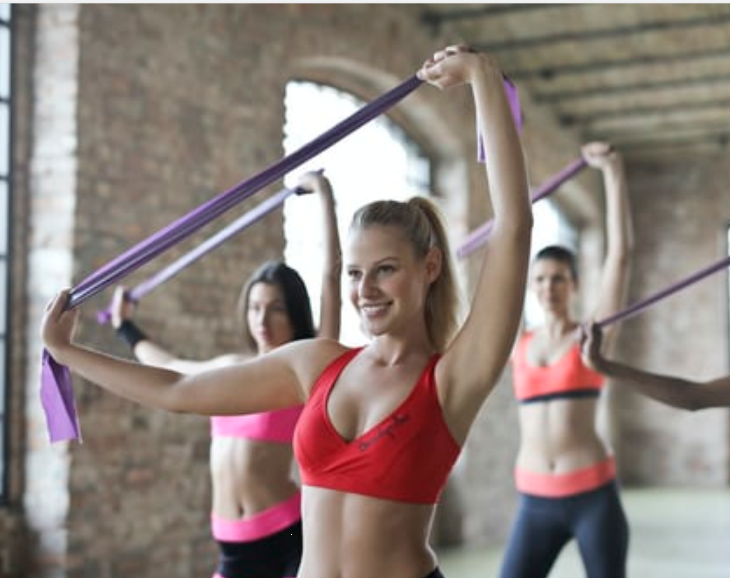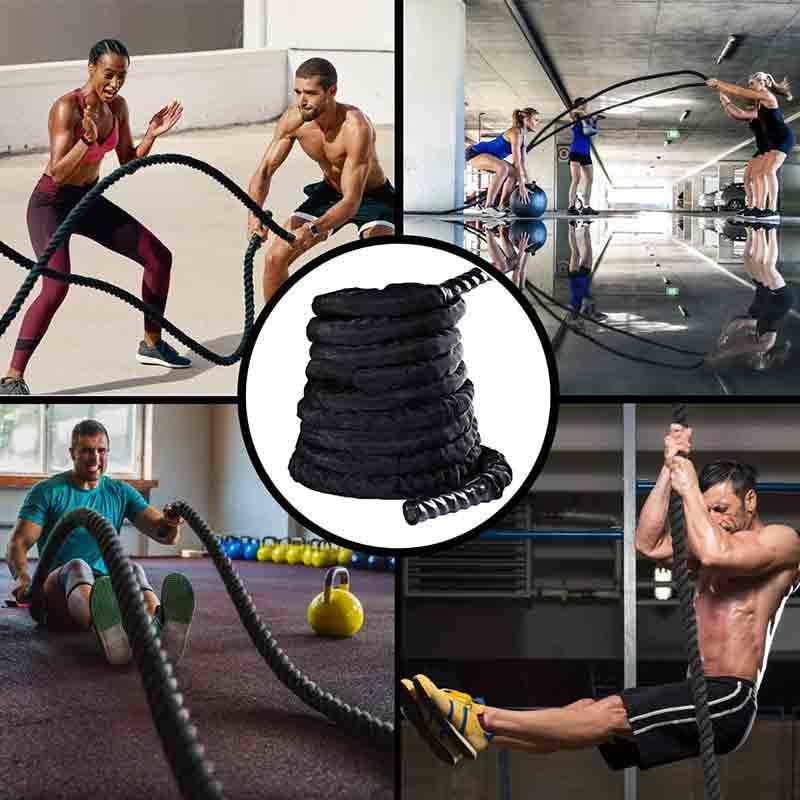Deadlift, known as the three golden exercises of fitness, must be familiar to everyone. The strength of a bodybuilder depends to a large extent on how much weight the person can lift.
If you are serious about lifting weights, it is important to learn how to deadlift. The deadlift is a good exercise because if done well, they can exercise several large muscle groups at the same time, making them a good compound exercise.

What is a deadlift?
A deadlift is a form of compound exercise that helps to effectively strengthen and develop body muscles. Deadlift exercise not only helps to effectively develop the buttocks and thigh muscles but also affects other muscle groups, such as shoulder muscles, back muscles, fighting muscles and chest muscles, and so on. Therefore, the deadlift is considered an important fitness technique, and most fitness enthusiasts know it and practice it to become a professional.
What muscles does deadlift work?
1.Back muscles
The reason why the deadlift is considered to be an exercise for back exercise in the bodybuilding industry is that the back muscles are always the main muscles that exert force during the entire deadlift process. After a period of deadlift intensive exercise, your lower back (lower back) erector spinal muscles will become abnormally developed and strong.
In addition to the erector spinae mentioned above, the latissimus dorsi and other upper back muscles will also participate in the exercise to a large extent during the deadlift to the peak stage (before locking).
2.Gluteus maximus and other related muscles
The deadlift is a hip action! If you want your hips to be round and strong, deadlifts may be the best way.
Deadlifts will play a role in the lifting phase and at the locking point. Especially at the highest locking point, the gluteus maximus will contract to the greatest extent.
In addition to the gluteus maximus, deadlifts can also actively engage other muscles around the hips and hips.
Benefits of deadlift
1.Deadlift can be trained to the whole body
Deadlifts can stimulate multiple muscle groups, and the effect is far more pronounced than isolated movements. Deadlift training twice a week can increase the strength of the hamstrings, gluteus maximus, lower back and upper back.
At the same time, your core needs to stabilize your body throughout the exercise, which means that your abdominal muscles can also be stimulated. Moreover, deadlifts stimulate the gluteus maximus more than squats. Therefore, you can see the effect faster than just practicing squats.
Strength training also helps to increase metabolism and helps to lose more fat in the long term.
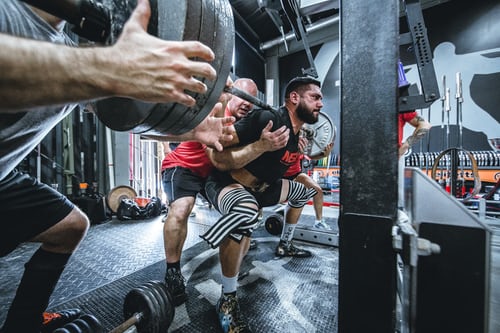
2.Deadlift can significantly increase strength
A study shows that deadlift training has produced tremendous improvements in strength and stability, especially for novices. Because you will use the front and back muscles of your body, deadlifts can protect your joints from unnecessary stress and injury, which is a great benefit.
Even if strength is not your main goal, this is still a very good benefit, especially because it makes you feel more confident.
3.Deadlift can improve your posture
A strong back can improve your posture, but you can also correct the wrong posture by deadlifting. To practice deadlift correctly, you need to make sure that your posture is correct, and a good posture in the deadlift process often becomes a good posture in daily life.
After long-term deadlift training, there will be significant changes in posture when walking and sitting upright. This is especially important for those of us who often sit with our backs in front of computer screens.
4.Deadlift enhances the strength in daily life
Different from pure power movements, deadlifts involve a variety of movements and muscle trajectories in daily life. This means that deadlifts can make it easier for you to do daily exercises, which directly contradicts the theory that gym training does not improve daily life.
Deadlifts can increase strength and prepare you for things like moving groceries or helping friends when moving.
5.Deadlift can prevent injuries
Some people will not practice deadlifts because they are afraid of back injuries. But studies have shown that deadlifts can help reduce back pain in some cases. The deadlift requires complete control of the deep abdominal muscles, buttocks and pelvis, which is essential in the treatment and prevention of low back pain.
Because deadlifts train the back chains, including the spine stabilizing muscles, latissimus dorsi, rhomboid muscles, gluteus maximus, and Achilles tendon, it helps prevent injuries to muscle groups that are usually overlooked.
The two predictors of ACL tear are the imbalance of quadriceps and Achilles tendon strength and the weakness/instability of the gluteal muscles.
Remember, it takes time to build strength, so don't choose too heavy or complicated exercises until you are ready. Be sure to pay attention to your posture and technique to strengthen muscles and prevent injuries.
6.Deadlift can save precious time
Compound movements like deadlifts can train multiple muscle groups at once. Unlike using three different equipment, you can train the same muscle group in less time, saving time.
7.It is easy to integrate into your training
Barbells are not the only piece of equipment. Dumbbells or kettlebells can be used for this exercise, especially like straight legs or Romanian deadlifts.
Of course, your friend may be a very avid deadlift, but they don't necessarily know the best way to teach a beginner to practice deadlift. Although the instructional video seems to be very helpful, for beginners, it is best to consult an experienced professional.
You don’t have to spend a lot of time in the gym to get significant progress by deadlifting. Even novice fitness players can practice this exercise.
How to do a deadlift correctly?
Step 1: Create a standard standing posture
The standard standing posture for deadlifts is standing, with feet shoulder-width apart or slightly wider than shoulders. Grasp the barbell with both hands, so that the inner forearm touches the outside of the thigh, and the forearm touches the bar lightly. By placing your hands on the barbell, you can place two palms on your body, or you can place one hand on the first and the back of the first hand. For long-term practitioners, often use the hand in front of the back Methods.
Step 2: Adjust the posture
Before you start the deadlift exercise correctly, you need to adjust your posture to a standard, adjust the spine in the center position neither up nor down, look straight ahead and lower your hips. Next, gently squeeze the lower back, making sure that the pelvis is in the center, shoulders facing back, and squeeze tightly without bending.
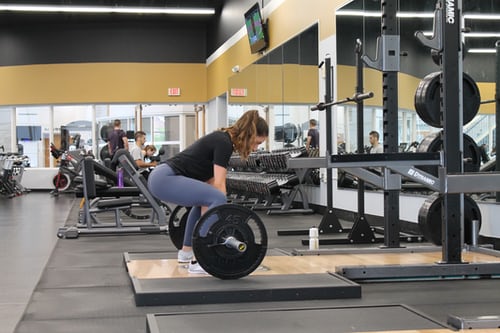
Step 3: Perform weightlifting
Hold the bar with both hands and push the legs down to make the two legs of the right leg generate power to lift the weight. The hips and shoulders are facing upwards at the same time. The hands are always tightly held, combining the strength with the torso, and lift the weight until the dumbbell is located. Middle of the upper thigh.
In the process of lifting the rod, the toe needs to be pushed down further after the toe is pushed. Note that the rod is always in contact with the body during the entire exercise.
Step 4: Reduce weight
Slowly lower the weight until it hits the floor, stop and lift to continue the deadlift. Note that when losing weight, you need to do a slow-motion and feel the muscle tension. In particular, when you lift a weight next time, you should control it and don't use inertial force to push the weight.
Be careful when practicing deadlifts correctly
Warming up before exercise is necessary. Before training, you need to warm up your muscles thoroughly to avoid injuries and cramps. Normal breathing plays an important role when deadlifts help save strength and practice more times.
The standard way of breathing is to hold down 1/4 of the barbell before pulling it. Once you lift the weight in the 2/4 direction and fully exhale when you reach the highest position, exhale slowly. When practicing, you should try to get as close as possible to your legs.
Common Mistakes
The first mistake is to push your waist forward when you get up. It's not that you can't push forward, but the premise of pushing forward is to use hip strength because the amplitude of pushing forward with hip strength is very small. However, some people will push their waist forward to make it easier when leaning over. They don't know that this will put huge pressure on the lumbar spine during the deadlift stage, and these pressures are generally beyond the lumbar spine. If you use your waist to push forward when you do it, 80% of you will have backache after doing it.
The second mistake is that the spine is not neutral when doing it. The so-called spine neutrality means that when doing deadlifts, the arms remain vertical to the ground, and their backs must be in a straight line and not bend. Because if your back is bent, it will cause the erector spinae muscles to contract eccentrically, which will indirectly reduce the effectiveness of your training.
The third and most important mistake is not bending the hip when doing it. A neutral spine does not mean that you have completed the hip flexion. When the spine is neutral, you must keep your hips leaning back. This is to complete a standard hip flexion. Because if one's hips are not leaning back, it looks like a standard, but the lower part of the lumbar spine is arched, and the position of the tail vertebra will be very painful after finishing the procedure. And only by flexing the hips can you not burden your lumbar spine, and flexing your hips can ensure your safety when doing deadlifts.
Some Deadlifts Variations
1.Romanian (Stiff-Leg) Deadlift
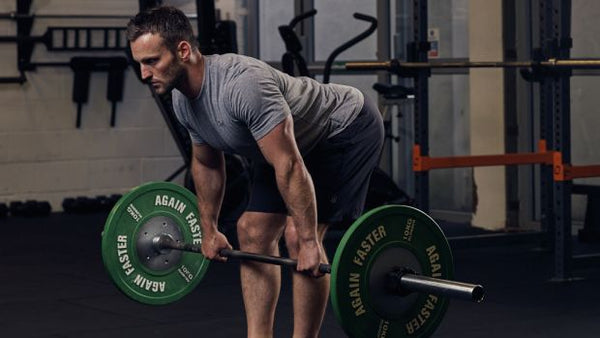
Before starting the fantasy, first, master a basic hard like this.
- Separate your feet and hug each other with the width of your side.
- Pick up on your lap, in your potential position. The future will be the future, remain huge. Your body should be almost done, and the weight reaches your legs.
- Keep your core tightened and use your heels to push to stand up straight. When you pull, bring heavy objects close to your calves.
- Pause at the top and squeeze your hips.
2.Kettlebell Romanian Deadlift
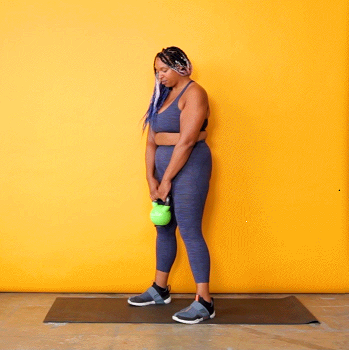
This is another great deadlift variant for people who are just getting started and for those who don't have much equipment, it's very convenient.
- Stand with your feet hip-width apart and your knees slightly bent. Hold the kettlebell with both hands and place it in front of your thighs.
- Hinge at your hips and bend slightly at your knees. Push your hips back to keep your back flat. Your torso should be almost parallel to the floor. Touch the bottom of the kettlebell to the floor.
- Keep your core tightened and use your heels to push to stand up straight. Keep the kettlebell close to your body while pulling.
- Pause at the top and squeeze your hips.
3.One-leg deadlift

Although a single-leg deadlift may lift a lighter load compared to a traditional deadlift, you will challenge your muscles differently. On the one hand, your hips and core muscles must work to keep your body stable and keep your single-leg balanced. Tony Gentilcore, the founder of Core in Brookline, Massachusetts, told SELF that holding two dumbbells in a single-leg deadlift is easier to maintain balance than holding one. A more advanced advancement is the deadlift on the opposite side of the leg. You do this with a dumbbell on the other side.
- Stand with your feet together, hold a dumbbell in each hand and place it in front of your legs. This is the starting position.
- Shift your weight to your right leg while keeping your right knee slightly bent, straighten your left leg behind your body, hinge on your hips, make your torso parallel to the floor, and then lower the weight To the floor.
- Keep your back flat. At the bottom of the movement, your torso and left leg should be almost parallel to the floor, and the weight should be a few inches above the ground. (If your hamstrings are tight, you may not be able to lift your legs that high.)
- Keep the core tightened, use your right heel to push to stand upright, and then pull the weight back to the starting position. Put the left leg back to meet the right leg, but try to put most of the weight on the right foot.
- Stop there and squeeze your hips.

